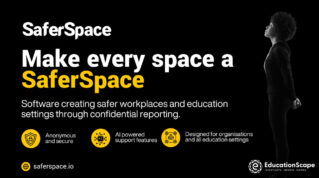It was July last year when we at the Fellowship of Inspection Nominees started hearing complaints from members (mostly judged good or outstanding by Ofsted) that their funding for 2024-25 was under threat.
The Education and Skills Funding Agency had instructed them to stop taking on new apprentices for certain programmes. In some cases providers were forced to comply and apprenticeship programmes were closed down.
The reason, providers were told, was they were failing to achieve a qualification achievement rate (QAR) of at least 50 per cent for one or more standards in 2023-24.
During exchanges facilitated by FE Week editor Shane Chowen at the Association of Employment and Learning Providers autumn conference, the providers’ claims were disputed by the Department for Education, whose officials believed intervention had been triggered instead by judgements made on performance recorded on the apprenticeship accountability framework.
But the Fellowship of Inspection Nominees (FIN) subsequently undertook a member survey, to which 68 providers responded, and held member roundtables that confirmed the original complaints had substance.
FIN is not in the business of defending poor quality and outcomes. But the DfE’s approach taken to intervention last year should not be repeated, especially when the government wants to see apprenticeship opportunities for young people increase.
FIN has recently written to the department urging it to urgently:
- Set out in a written statement to all providers on the apprenticeship provider and assessment register detailing what its policy will be on allowing new starts on individual apprenticeship standards from the start of 2025-26, and on what basis or quality thresholds the policy will be based.
- Issue the statement publicly, e.g. in the ESFA Update, five to six months before the end of this academic year so potentially affected providers can try to achieve the required performance and programme completion improvements before year-end.
Our members’ concerns are that without adequate notice of the government’s expectations, the DfE may intervene again at a higher level of QAR, e.g. 60 per cent, or at some as yet unspecified benchmark under the apprenticeship accountability framework.
Providers need confirmation that intervention will indeed be based on the Apprenticeship Accountability Framework in future. They recognise that achievement rates are part of the framework, but the framework must offer a more balanced and comprehensive measure of provider delivery.
QAR on its own is a crude and unfair measure of provider performance for several reasons.
FIN is not defending poor quality and outcomes
Firstly, it is not uncommon for the gap between an apprentice completing their training and their end point assessment to be as long as three to five months. This frequently results in the end point assessment taking place after July 31, which means that a successful programme completion cannot be counted towards the QAR in the same academic year.
Meanwhile, insufficient allowance is being made for a provider starting a new programme/standard in any given year. The QAR is effectively zero for that standard, while the provider has made significant investment in upfront costs. The initial learner cohort can be small or immature and therefore non-achievers have a greater impact on achievement rates.
The impact of the functional skills attainment requirement for apprentice completers on the QAR had become an issue before ministers announced their reform on February 11, although the change may actually deter employers from recruiting 16 to 18 year olds who aren’t covered by the announcement.
But equally importantly, the government should overhaul the maths curriculum to make the qualification more ‘functional’. FIN also argues that if early leavers are not funded, they should not count towards QAR.
Some providers reported that they were on their fourth or fifth ESFA account manager before the DfE made recent changes to the supervisory system. It meant the provider had to explain its business strategy to each new manager and it made conversations about QAR harder.
To borrow lyrics from a Radiohead song, providers ask for ‘no alarms and no surprises’ please for 2025-26. They want to know for certain if their performance is being judged on their apprenticeship accountability framework data rather than on QAR alone.

















The bottom line is that the QAR is often misused, for all sorts of reasons and by stakeholders who really shouldn’t. It limits deeper understanding and more meaningful quality improvement. Anyone using QAR to make a judgement, should deeply understand how it works. (there are a few semi flat notes in the article above, for instance)
Perhaps there is a case for QAR champions, who could be tasked with calling out misuse. That at the very least, would help separate out ignorance from mischief.